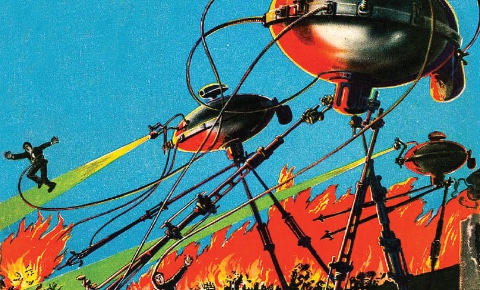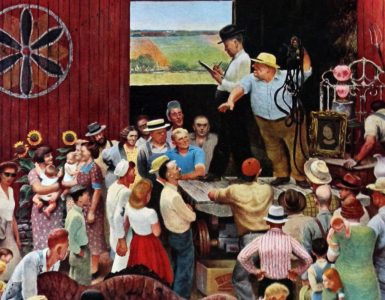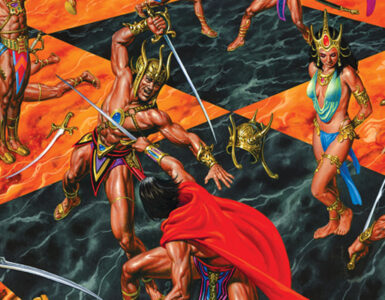 As we learned in our April 4th post, “Origins of Science Fiction,” magazines began to reach a much wider audience as Europe and America became more industrialized. Increasingly urban and literate societies required cheap, entertaining, and easily accessible entertainment to escape the drudgery of the mills and offices. Since magazines could be produced cheaply and in a timely fashion, the last quarter of the nineteenth century became “The Age of the Storytellers.” Beginning around 1880, when Robert Louis Stevenson started to publish his first works of fiction, the world would witness the birth of the popular fiction magazine as well as the pulp magazine.
As we learned in our April 4th post, “Origins of Science Fiction,” magazines began to reach a much wider audience as Europe and America became more industrialized. Increasingly urban and literate societies required cheap, entertaining, and easily accessible entertainment to escape the drudgery of the mills and offices. Since magazines could be produced cheaply and in a timely fashion, the last quarter of the nineteenth century became “The Age of the Storytellers.” Beginning around 1880, when Robert Louis Stevenson started to publish his first works of fiction, the world would witness the birth of the popular fiction magazine as well as the pulp magazine.
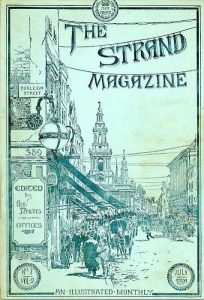 Stevenson’s “Treasure Island,” first serialized in 1881-82, helped to provide the spark for other authors to try their hand at similar fiction. Works such as H. Rider Haggard’s King Solomon’s Mines (1885), “She” (1886), and “Allan Quatermain” (1887), as well as Arthur Conan Doyle’s “A Study in Scarlet” (1887) demonstrated the need for an inexpensive, popular fiction magazine to be published on a regular basis. Shortly after Christmas in 1890, the first of these—The Strand Magazine—was launched by George Newnes. Filled with illustrations, the periodical really took off during the summer of 1891 with the start of Conan Doyle’s “The Adventures of Sherlock Holmes,” introducing one of the most successful continuing character series of all time.
Stevenson’s “Treasure Island,” first serialized in 1881-82, helped to provide the spark for other authors to try their hand at similar fiction. Works such as H. Rider Haggard’s King Solomon’s Mines (1885), “She” (1886), and “Allan Quatermain” (1887), as well as Arthur Conan Doyle’s “A Study in Scarlet” (1887) demonstrated the need for an inexpensive, popular fiction magazine to be published on a regular basis. Shortly after Christmas in 1890, the first of these—The Strand Magazine—was launched by George Newnes. Filled with illustrations, the periodical really took off during the summer of 1891 with the start of Conan Doyle’s “The Adventures of Sherlock Holmes,” introducing one of the most successful continuing character series of all time.
With the success of The Strand Magazine came a host of imitators, among them Pearson’s Magazine. It debuted in late 1895 and soon became one of the leading publishers of magazine science fiction, featuring the future war stories of George Griffith and the scientific romances of Herbert George Wells. “The War of the Worlds” and “The Invisible Man,” both originally published in Pearson’s in 1897, are still enjoyed today, over a century after their initial appearances. Educated in the sciences as well as a literary genius, Wells’ mastery of both science and fiction was readily apparent. His later science fiction, including “The First Men in the Moon” (1900-1901) and “The Country of the Blind “1904), would run in The Strand.
In our next installment, we’ll turn our attention across the pond where an American entrepreneur named Frank A. Munsey was busy turning a struggling magazine into the first American all-fiction magazine.
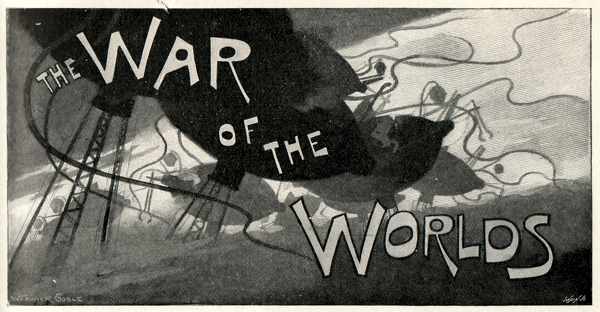
To learn more about the images used in this post, click on the illustrations. Click here for references consulted for this article.

